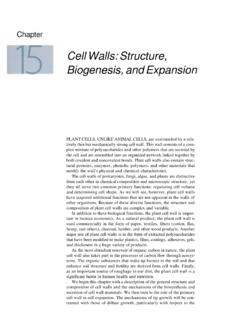Transcription of Recognizing and Responding to Sexual Harassment Complaints
1 Pe n n S tat e u n i v e r s i t y Recognizing and Responding to Sexual Harassment Complaints The Affirmative Action Office 328 Boucke Bldg. University Park, PA 16802. Tel: 814-863-0471 V/TTY Fax: 814-863-7799. Website: 3. CONTENT OVERVIEW. I. Sexual Harassment laws, policy and definition A. Penn State University Policy AD41. B. Consensual Relationships and the Potential for Sexual Harassment Complaints C. Definition of Sexual Harassment D. Examples of Sexual Harassment E. Equal Employment Opportunity Commission Guidelines F. Evaluating Sexual Harassment Behaviors II. THE Sexual Harassment RESOURCE PERSONs A. Role and Responsibilities B.
2 When Receiving a Complaint III. Responding TO A COMPLAINT. A. Concerns of Complainants B. The Initial Interview C. What to Say When Receiving a Complaint D. Information to Secure from Complainant E. During the Initial Interview IV. WHAT TO DO NEXT. A. Review the Information Received B. Follow-up with Complainant to Explain/Discuss Appropriate Options V. COMPLAINT RESOLUTION. A. Discuss With the Affirmative Action Office B. Resolution/Corrective Actions C. Actions After the Complaint Has Been Resolved VI. APPENDIX. Advantages of Writing a Letter Sample Letters to Harasser 4. I. Sexual Harassment laws, policy and definition Sexual Harassment is prohibited by University Policy AD41 and by Title VII of the Civil Rights Act of 1964 and Title IX, Education Amendments of 1972.
3 It is also prohibited under the Pennsylvania Human Relations Act. A. Penn State University Policy AD41. Sexual Harassment of faculty, staff or students is prohibited and will not be tolerated at The Pennsyl- vania State University. It is the policy of the University to maintain an academic and work environ- ment free of Sexual Harassment . Sexual Harassment violates the dignity of individuals and impedes the realization of the University's educational mission. The University is committed to preventing and eliminating Sexual Harassment of faculty, staff and students through education and by encourag- ing faculty, staff and students to report any concerns or Complaints about Sexual Harassment .
4 Prompt corrective measures will be taken to stop Sexual Harassment whenever and wherever it occurs. Any member of the University community who experiences Sexual Harassment should immediately report the incident to the Affirmative Action Office, a Sexual Harassment resource person, an adminis- trator in his or her department or unit, or the Office of Human Resources. In cases where an indi- vidual reports alleged Sexual Harassment to an administrator, faculty member, or staff member, the person receiving the complaint should contact the Affirmative Action Office to discuss resolution and ensure consistent responses to issues across units.
5 B. Consensual Relationships and the Potential for Sexual Harassment Complaints Romantic and/or Sexual relationships between faculty and student, staff and students or supervi- sors and subordinate employees are strongly discouraged. Such relationships have the potential for adverse consequences, including the filing of charges of Sexual Harassment . Given the fundamentally asymmetric nature of the relationship where one party has the power to give grades, thesis advice, evaluations, recommendations, promotions, salary increases or performance evaluations, the apparent consensual nature of the relationship is inherently suspect. Policy AD41.
6 There is the potential in consensual relationships for Sexual Harassment and other Complaints due to the: Power differential in the relationship Potential for abuse and exploitation Retaliatory Harassment 5. Conflict of interest Effect on others University Policy AD41 requires that the person in the position of supervision or academic responsi- bility must report the relationship to his or her immediate supervisor. Once the consensual relation- ship is reported, the immediate supervisor is responsible for eliminating or mitigating the conflict of interest to the fullest feasible extent and ensuring that fair and objective processes are in place for de- cisions relative to grading, thesis advice, evaluations, recommendations, promotions, salary increases or performance evaluations.
7 The new supervisory or academic arrangement should be documented.. C. Definition of Sexual Harassment The Equal Employment Opportunity Commission (EEOC) and the Office for Civil Rights (OCR). provide the following three prong definition for Sexual Harassment . Unwelcome Sexual advances, requests for Sexual favors, and other verbal or physical conduct of a Sexual nature when: Submission to such conduct is a condition for employment, promotion, grades, or academic status;. Submission to or rejection of such conduct is used as the basis for employment or academic decisions affecting an individual;. Such conduct has the purpose or effect of interfering unreasonably with the individual's work or academic performance or creates an offensive, hostile, or intimidating working or learning environment.
8 Behavior of a Sexual nature that might be Sexual Harassment falls into two categories: - Quid Pro Quo - involves the first two prongs of the definition - Hostile Environment Sexual Harassment - refers to the third prong of the definition In other words the first two prongs involve unwelcome Sexual advances or requests for Sexual favors in exchange for a job, a promotion, a grade or some other employment or academic benefit. The third prong involves unwelcome behaviors of a Sexual nature that a reasonable person would find so offen- sive, hostile, or intimidating as to alter the conditions of employment or academic activity. Sexual Harassment can occur in a variety of circumstances, including but not limited to the following: The victim as well as the harasser may be a woman or a man.
9 The victim does not have to be of the opposite sex. Sexual Harassment can occur between peers or between individuals of the same sex. The harasser can be the victim's supervisor, an agent of the employer, a supervisor in another area, a co-worker, or a non-employee in the workplace. 6. The victim does not have to be the person harassed but could be anyone reasonably affected by the offensive conduct. The harasser's conduct must be unwelcome. It is important to note that apparent consent to requests for Sexual favors or participation in verbal or physical conduct of a Sexual nature does not necessarily consti- tute welcomeness. D. Examples of Sexual Harassment Direct or indirect threats or bribes for unwanted Sexual activity Intrusive sexually explicit questions Rating a person's Sexual attractiveness Unwelcome patting, hugging or touching of a person's body, hair or clothing Offensive or suggestive Sexual comments Disparaging remarks to a person about her/his gender, body or gender identity Pervasive displays of pictures, calendars, cartoons or other material with sexually explicit or graphic content Asking about a person's Sexual fantasies.
10 Sexual preferences or Sexual activities Repeatedly asking for a date after the person has implicitly or explicitly expressed disinterest Making Sexual gestures with hands or through body movements Spreading rumors about a person's sexuality Frequent jokes about sex or gender stereotypes Name-calling, such as bitch, whore, slut, fag or dyke . Ogling or leering, staring at a woman's breast or a man's derriere Unwanted letters, notes, telephone calls, e-mails or material of a Sexual nature Stalking Attempted or actual Sexual assault These examples are not all-inclusive of the types of conduct that may constitute Sexual Harassment . Each situ- ation must be considered in light of the specific facts and circumstances to determine if Sexual Harassment has occurred.




